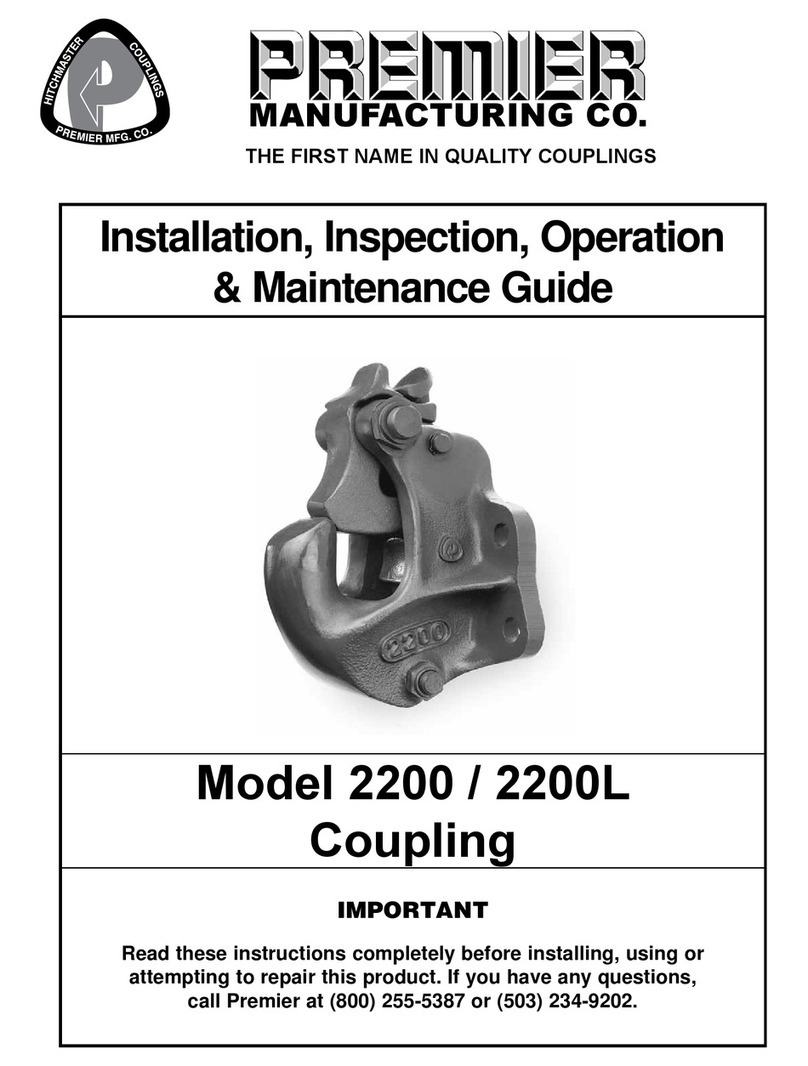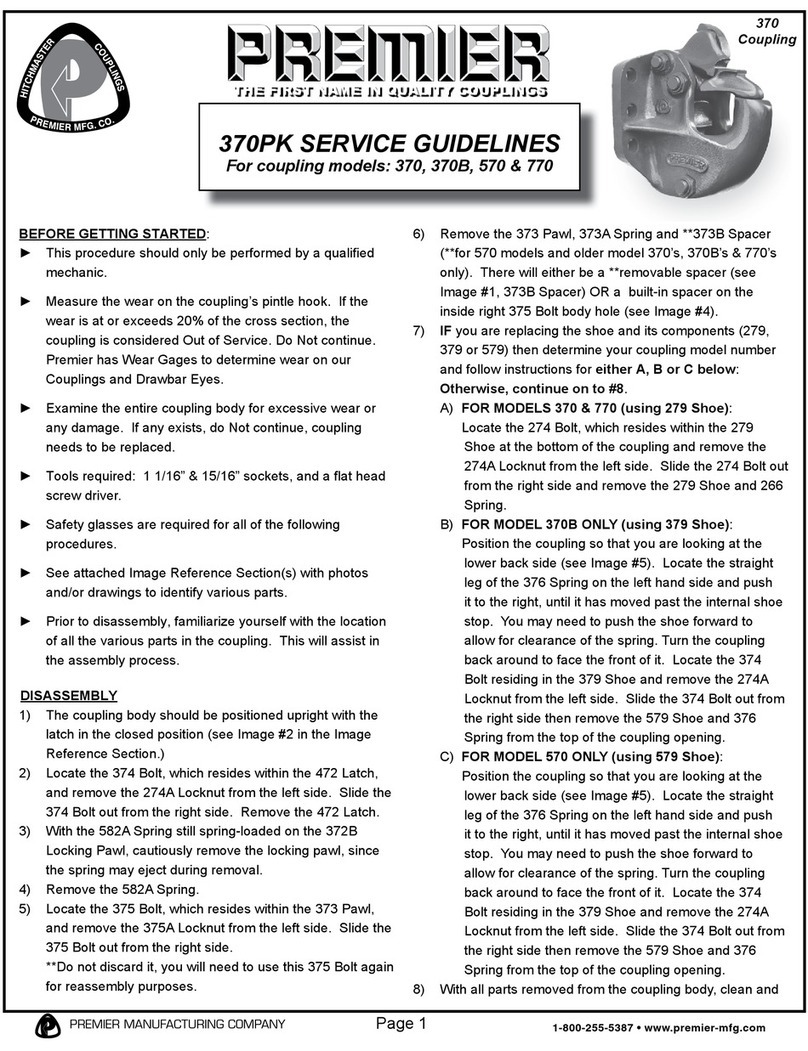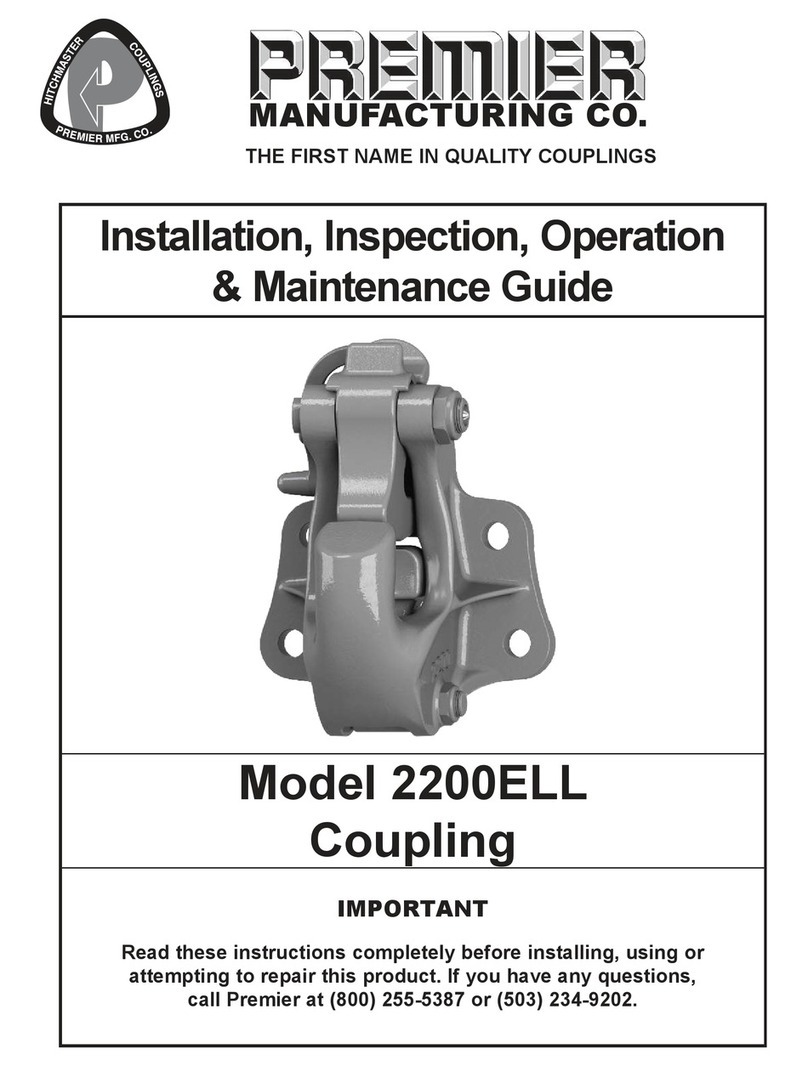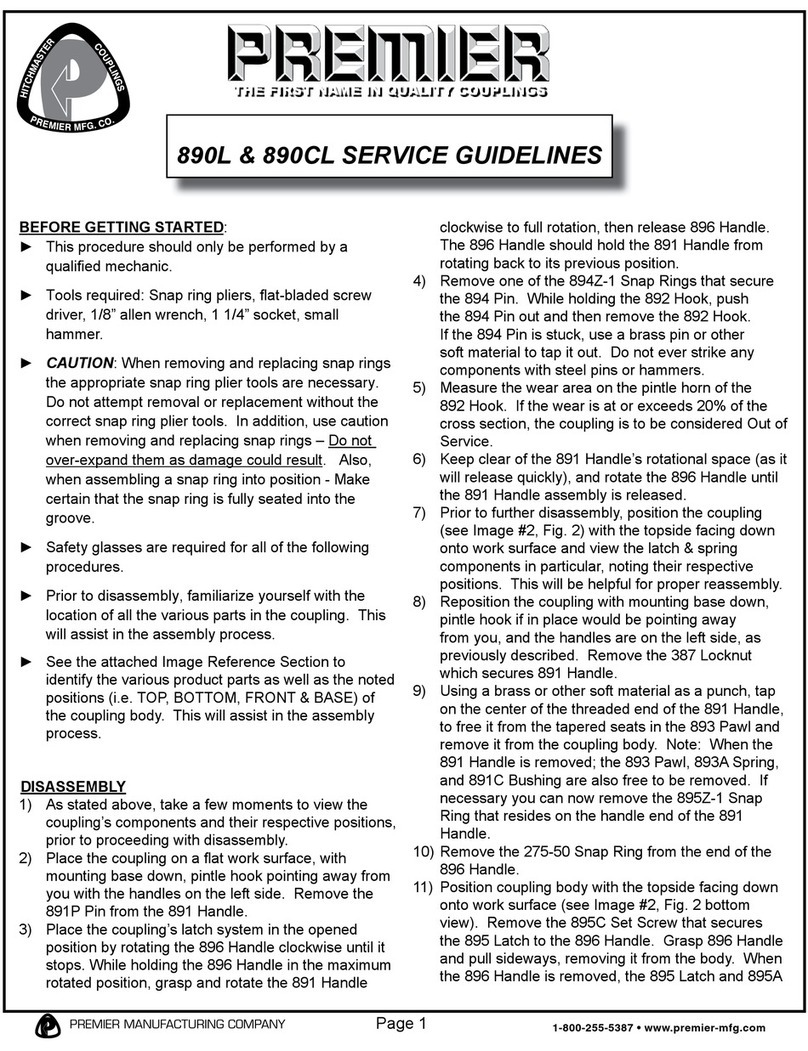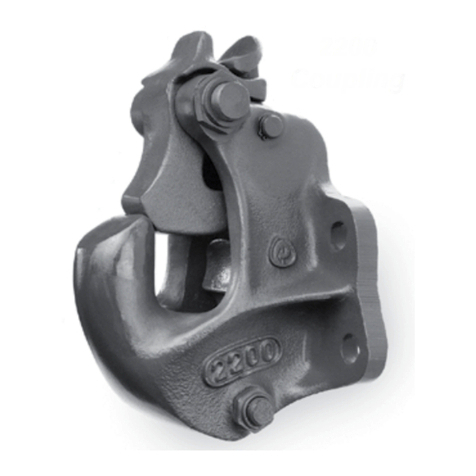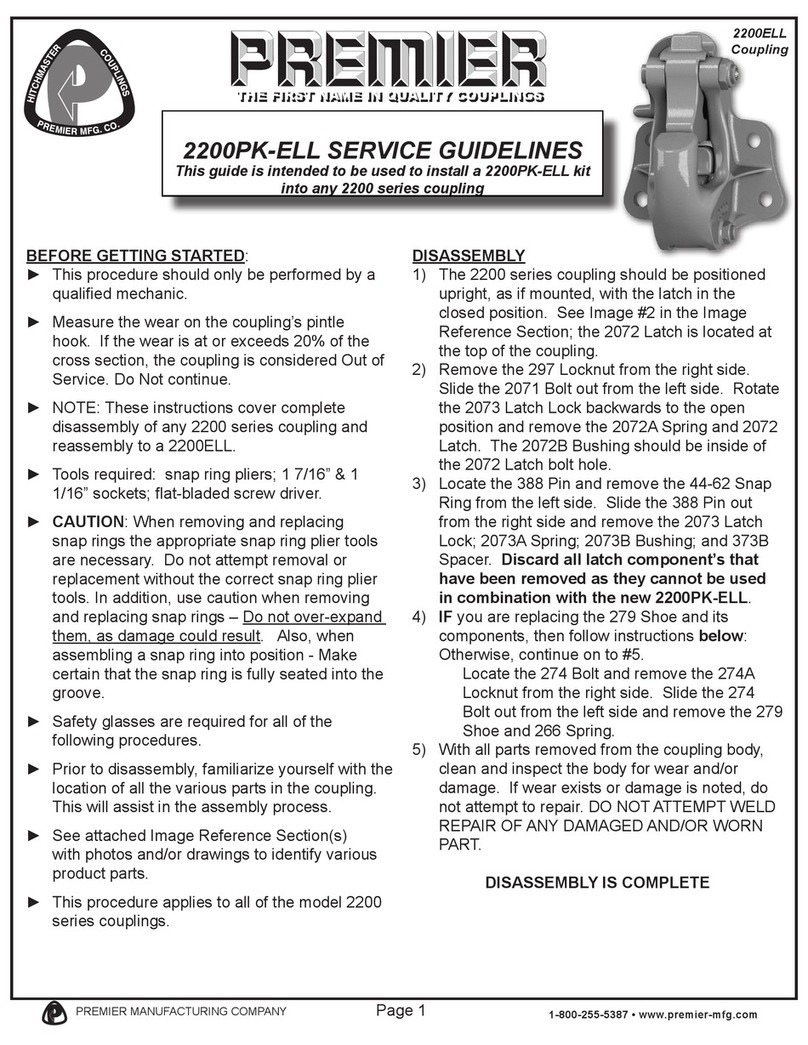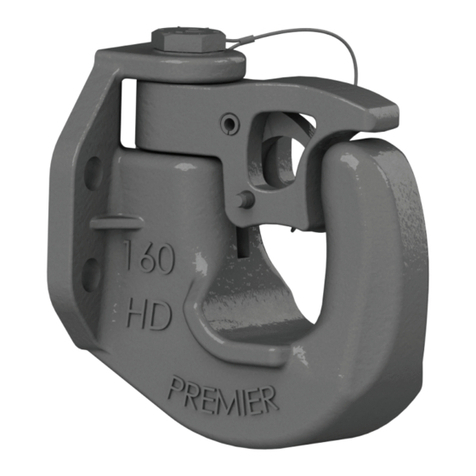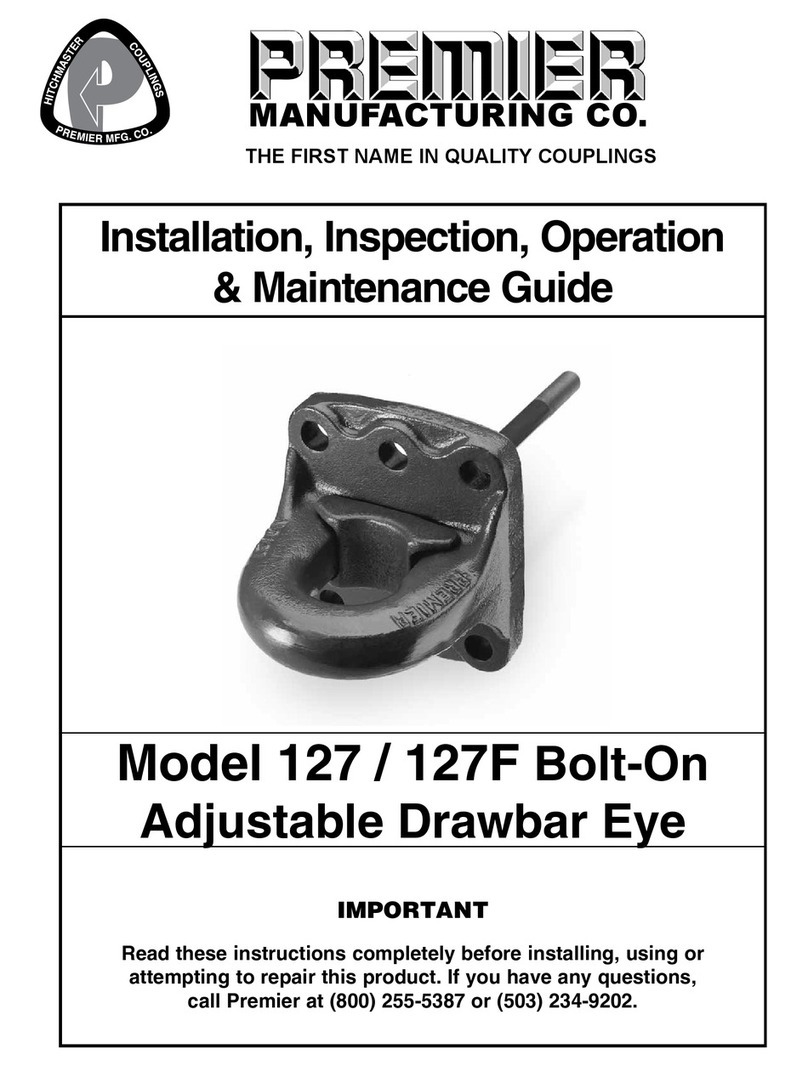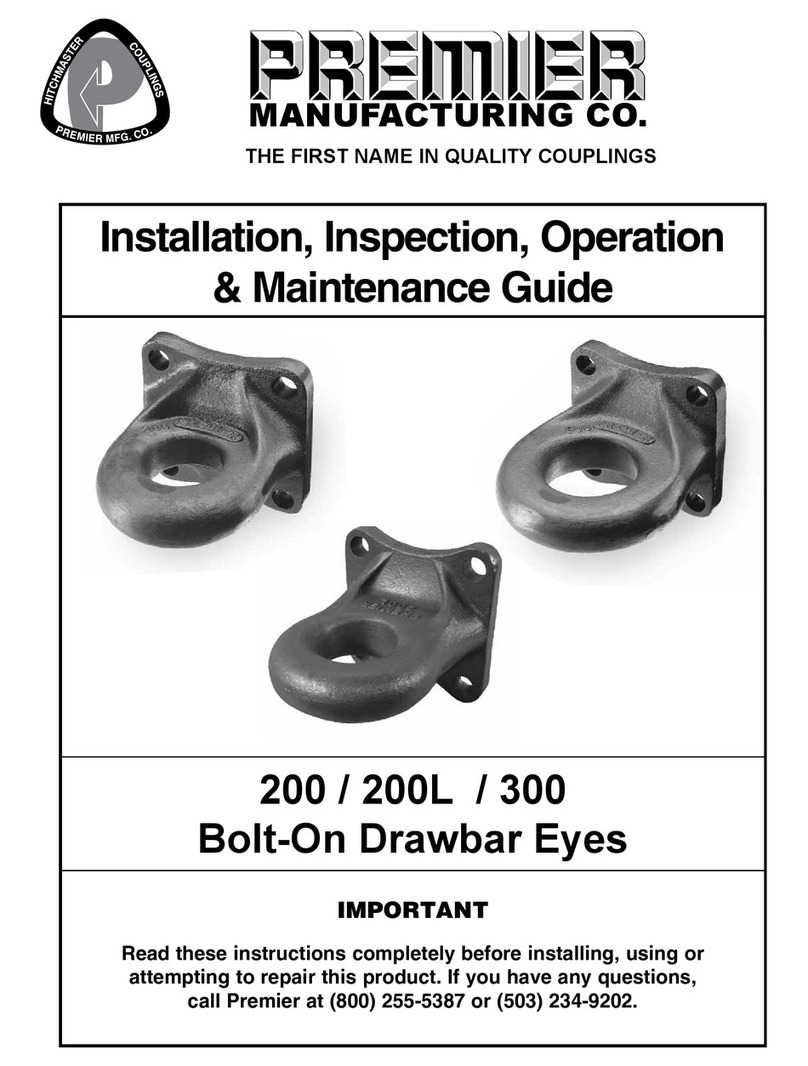
1-800-255-5387 • www.premier-mfg.com
premier manufacturing company Page 7
Model 470 / 470H Coupling
INSTALLATION
Inspection and Maintenance:
1. Visually inspect the coupling body and latch
components for cracks, impact damage and/
or deformation before each and every use. Do
NOT use if any of these conditions exist.
2. Check the gap between the 472 Latch and the
top of the pintle/hook on the coupling body
before each and every use. Lift up on the
latch to remove any free play and measure the
gap. A gap of 3/8” or more means the coupling
must be taken out of service and repaired or
replaced.
3. If the wear area on the pintle/hook has worn
20% or more from its original cross-section, the
coupling is considered out-of-service and must
NOT be used.
4. Lubrication of the latch components must
be performed at 90-day intervals or sooner
depending on the operating environment.
Lubricate the latch components with a spray-
type lubricant to evenly coat all rotation points.
Rotate each latch component several times to
evenly distribute the lubricant.
5. Remove any excess lubricant with a rag. Do
not apply lubricant to the pintle/hook or saddle
area of the coupling.
6. Never weld on any Premier part in order to
repair damaged or worn areas. Field and/or
shop welds are inadequate and may further
weaken the coupling.
7. WARNING: Other inspection and maintenance
procedures are also required prior to the
operation of combination vehicles. Consult
and follow all Federal Motor Carrier Safety
Regulations as well as local, state and federal
guidelines.
INSPECTION / OPERATION / MAINTENANCE
torque value, or eight other 3/4” grade-8 bolts
and grade-C locknuts. Only use new fasteners
when mounting couplings or drawbar eyes and
torque to SAE specifications. The two longer
(2 3/4”) mounting bolts in the bolt kit are used
for mounting the coupling and air chamber
bracket to the cross member. WARNING:
Never use an air chamber on a Premier
coupling without a 271 series thimble.
7. Once mounted, check the latch components
for proper operation and clearances (see the
Inspection/Operation/Maintenance section for
opening and closing the latch). If the operation
of the latch components is sticky, lubricate
all rotation points with a light penetrating oil.
Work the latch assembly several times to
distribute the lubricant evenly and remove any
excess with a rag. Do not apply lubricant to
the pintle/hook or saddle area of the coupling.
8. Plumb the air line to the 281 Air Chamber
from the vehicle’s emergency side air supply.
NEVER use the service side air supply.
9. WARNING! Keep hands clear of the Coupling
during this test. Activate the emergency side
air supply by releasing the emergency brake
and visually verify that the 279 Shoe fully
rotates toward the pintle.
10. If the 279 Shoe does not move, verify that
the 281 Air Chamber has been connected to
the emergency side air supply and that the
pushrod length is correct.
11. When the emergency side air supply is
removed, the shoe should completely retract.
Please note: The 279 Shoe acts as a shock
absorbing device to help smooth the ride
between vehicles. It is not considered part of
the latching mechanism.
12. An “IMPORTANT WARNINGS!” sticker
was enclosed. This must be attached to the
coupling or cross member and be visible for
the end user to read.



